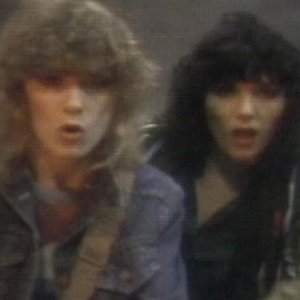Navigation
Install the app
How to install the app on iOS
Follow along with the video below to see how to install our site as a web app on your home screen.

Note: this_feature_currently_requires_accessing_site_using_safari
More options
You are using an out of date browser. It may not display this or other websites correctly.
You should upgrade or use an alternative browser.
You should upgrade or use an alternative browser.
heart
Hey!
Welcome to We love the Eighties Community! We’re thrilled you’ve stopped by our ’80s paradise. 🌟 Here, we celebrate all things ’80s – from iconic music, movies, fashion, to the vibrant culture that defined a generation! Feel free to introduce yourself and start exploring the threads. Don’t hesitate to share your thoughts, memories, or even your latest ‘80s finds! We’re excited to have you join our vibrant community. Join us to connect with fellow enthusiasts, share your favorite memories, and dive into engaging discussions that bring the nostalgia of the ‘80s to life. Whether you’re a die-hard fan or just curious about this dynamic era, you’ll find a home here.
The heart is a muscular organ in most animals. This organ pumps blood through the blood vessels of the circulatory system. The pumped blood carries oxygen and nutrients to the body, while carrying metabolic waste such as carbon dioxide to the lungs. In humans, the heart is approximately the size of a closed fist and is located between the lungs, in the middle compartment of the chest, called the mediastinum.In humans, other mammals, and birds, the heart is divided into four chambers: upper left and right atria and lower left and right ventricles. Commonly the right atrium and ventricle are referred together as the right heart and their left counterparts as the left heart. Fish, in contrast, have two chambers, an atrium and a ventricle, while most reptiles have three chambers. In a healthy heart blood flows one way through the heart due to heart valves, which prevent backflow. The heart is enclosed in a protective sac, the pericardium, which also contains a small amount of fluid. The wall of the heart is made up of three layers: epicardium, myocardium, and endocardium.The heart pumps blood with a rhythm determined by a group of pacemaker cells in the sinoatrial node. These generate an electric current that causes the heart to contract, traveling through the atrioventricular node and along the conduction system of the heart. In humans, deoxygenated blood enters the heart through the right atrium from the superior and inferior venae cavae and passes to the right ventricle. From here it is pumped into pulmonary circulation to the lungs, where it receives oxygen and gives off carbon dioxide. Oxygenated blood then returns to the left atrium, passes through the left ventricle and is pumped out through the aorta into systemic circulation, traveling through arteries, arterioles, and capillaries—where nutrients and other substances are exchanged between blood vessels and cells, losing oxygen and gaining carbon dioxide—before being returned to the heart through venules and veins. The heart beats at a resting rate close to 72 beats per minute. Exercise temporarily increases the rate, but lowers it in the long term, and is good for heart health.Cardiovascular diseases are the most common cause of death globally as of 2008, accounting for 30% of deaths. Of these more than three-quarters are a result of coronary artery disease and stroke. Risk factors include: smoking, being overweight, little exercise, high cholesterol, high blood pressure, and poorly controlled diabetes, among others. Cardiovascular diseases do not frequently have symptoms but may cause chest pain or shortness of breath. Diagnosis of heart disease is often done by the taking of a medical history, listening to the heart-sounds with a stethoscope, as well as with ECG, echocardiogram, and ultrasound. Specialists who focus on diseases of the heart are called cardiologists, although many specialties of medicine may be involved in treatment.
View More On Wikipedia.org
View More On Wikipedia.org
-

Heart's 'These Dreams' Tops the Charts On This Day March 22 1986
On this day March 22, 1986, marked the rise of Heart's "These Dreams" as the #1 song in America, reigning supreme until March 28.- Pete
- Thread
- 80s music heart these dreams
- Replies: 0
- Forum: Retro Rewind: On This Day in the ’80s
-

Total Eclipse of the Heart by Bonnie Tyler: A Global Chart-topper Emerges
On this day February 11, 1983, Bonnie Tyler unleashed her single "Total Eclipse of the Heart" upon the UK audience. This powerhouse track dominated the charts in America from October 1 to 28, and its reign wasn't limited to the US—it also climbed to the top spot in the UK, Canada, Ireland...- Pete
- Thread
- 80s music bonnie tyler heart total eclipse of the heart
- Replies: 1
- Forum: Retro Rewind: On This Day in the ’80s
-

Open Your Heart by Madonna: Top Song of '87
On this day February 7, 1987, "Open Your Heart" by Madonna claimed the top spot on the American music charts, reigning as the number one song from February 7 to 13. This love ballad serves as a platform for Madonna to express her sexual desires openly, marking a significant moment in her career...- Pete
- Thread
- 80s music heart madonna open your heart
- Replies: 0
- Forum: Retro Rewind: On This Day in the ’80s
-

Heart - City's Burning
Music video by Heart performing City's Burning. (C) 1982 Sony Music Entertainment Inc.- Pete
- Media item
- 1982 music videos 80s music city's burning heart
- Comments: 0
- Category: Music Videos From 1982

